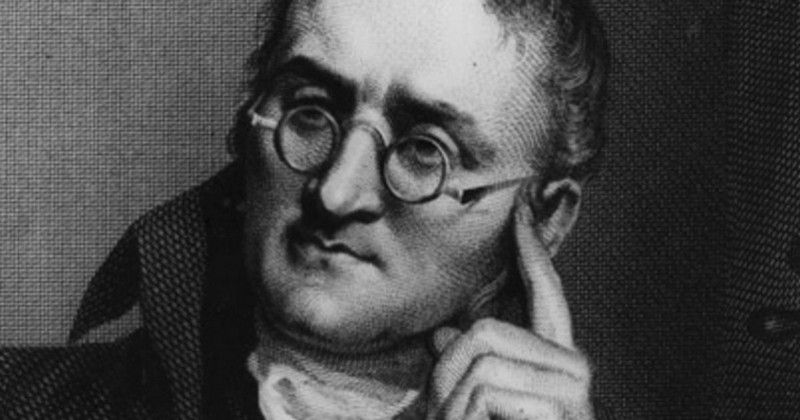The 9 postulates of Dalton’s atomic theory

This scholar not only discovered color blindness: he also created one of the first theories of the atom.
Some aspects that the most current evidence has contradicted
Dalton's atomic theory has been one of the most important in science in describing the structure of matter. However, since the time when this theory was elaborated, there have been numerous advances there have been numerous advances that have shown that have shown that some of the postulates defended by the author are not true.
For example, the fact that the atom is a basic and indivisible unit has been shown to be false, as it has been possible to distinguish within the atom different parts formed by subatomic structures such as protons, neutrons and electrons..
It has also turned out to be uncertain that all atoms of the same substance have the same properties. We can find atoms of different electric charge according to the balance between protons and electrons (what we know as ions), as well as different atomic masses of the same element (the isotopes).
A third aspect that has proved to be divergent from Dalton's atomic theory is the fact that atoms are immodifiable, something that has been denied with the advent of fusion and nuclear fission..
Although evidence has shown that some of the postulates are not entirely true, Dalton's theory has laid the foundations of modern chemistry and has allowed a great advance in the understanding of matter and its behavior.
- Matter is made entirely of atoms, indivisible units of matter that can neither be generated nor destroyed.The atoms of a particular element are made up of atoms, units of indivisible matter that can neither be generated nor destroyed.
- The atoms of a particular element have in all cases the same size, weight and qualities, being all the samebeing all of them equal to each other.
- The characteristics of the atoms of different elements are also always different. are also always differentThe characteristics of the atoms of different elements are also always different, possessing different characteristics.
- Although they can combine with other substances to form different compounds, the atoms themselves remain unchanged. remain unalterableThey can neither be divided nor destroyed.
- Compounds are formed by combining the atoms of two or more different elements.
- The combination of different types of atoms is carried out through simple relationships.
- The combination between two particular elements can give rise to different compounds depending on the proportions in which they are mixed..
- In chemical reactions it is possible to create, dissociate or transform molecules, these being a reorganization of the atoms that make up each compound.These molecules are a reorganization of the atoms that compose each compound.
- The same compound is always produced by the same proportion in the combination of atoms. Bibliographical references:
-
- Gribbin, J. (2006). History of science: 1543-2001 (2nd edition). Barcelona: Crítica, S.L.
- Petrucci, R.; Harwood, W.; Herring, G. & Madura, J. (2007). General Chemistry. 9th ed. Upper Saddle River, New Jersey: Pearson Prentice Hall.
- Rosental, M. and Iudin, P. (1973). Philosophical Dictionary. Ediciones Universo.
- Soledad, E. (2010). Chemistry and atomic theory. Química general. UNED, 22-23.
(Updated at Apr 13 / 2024)